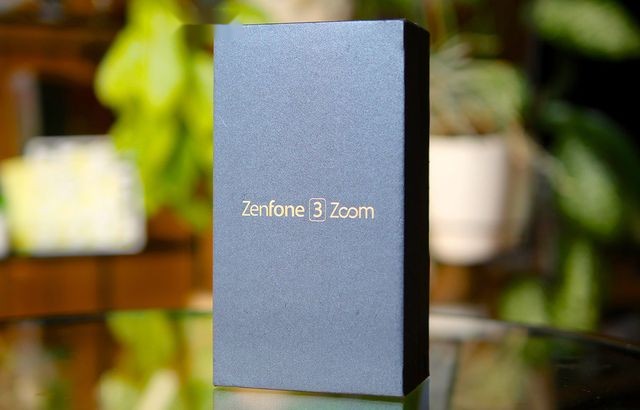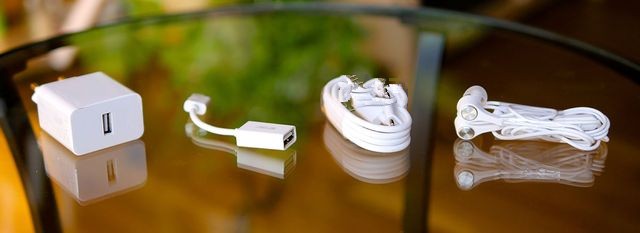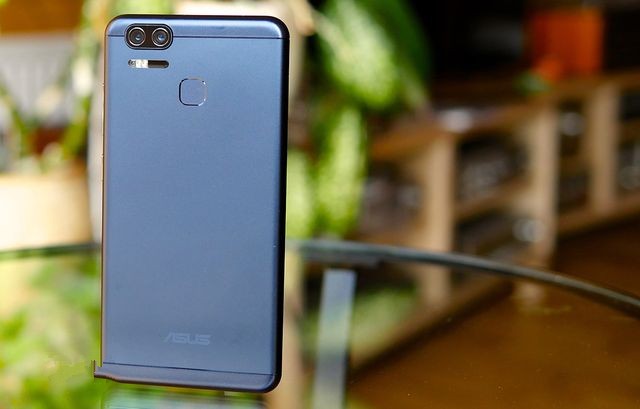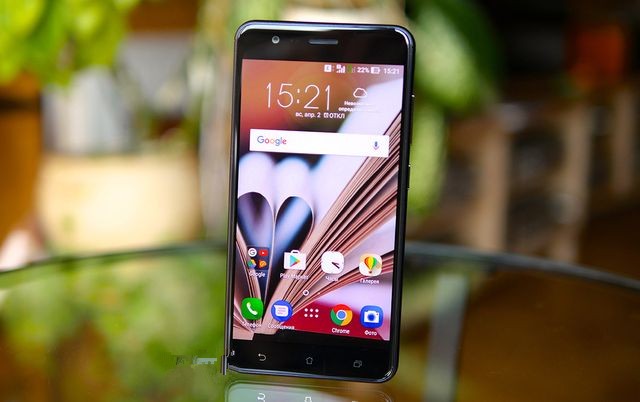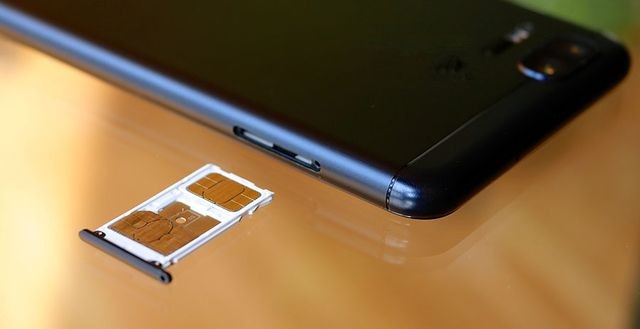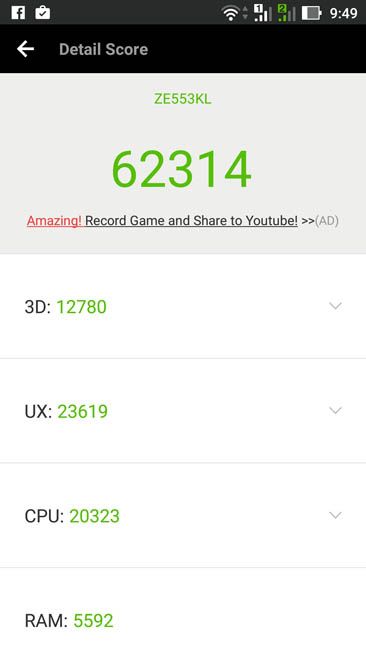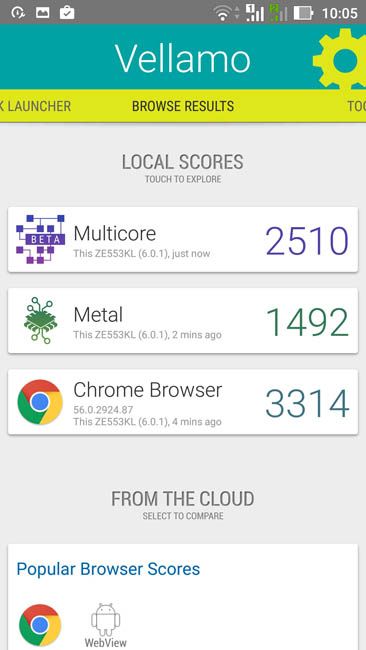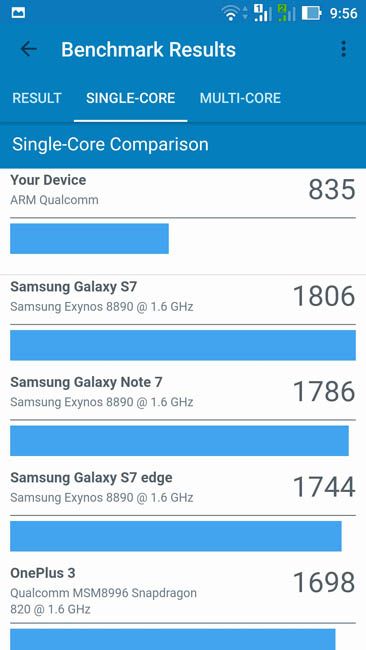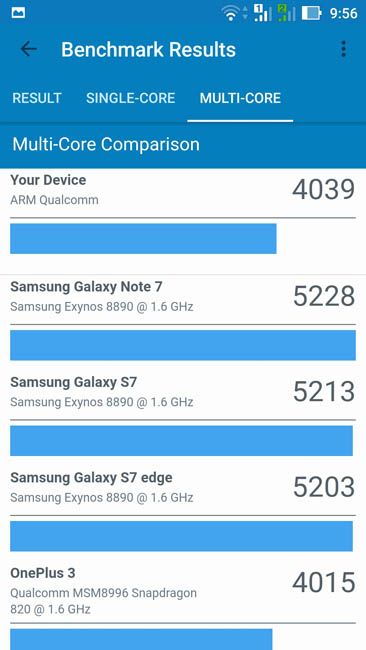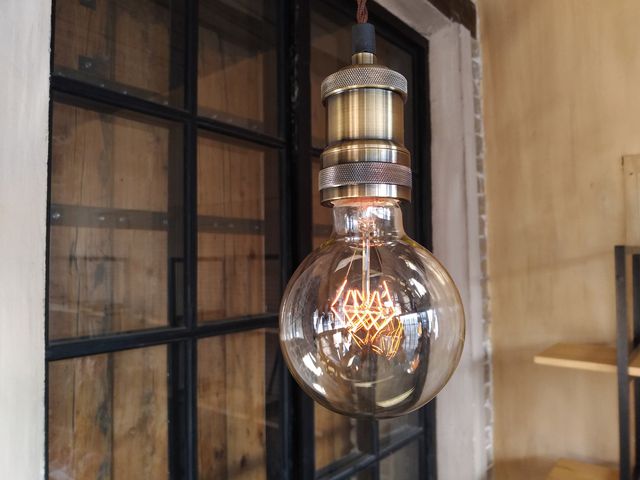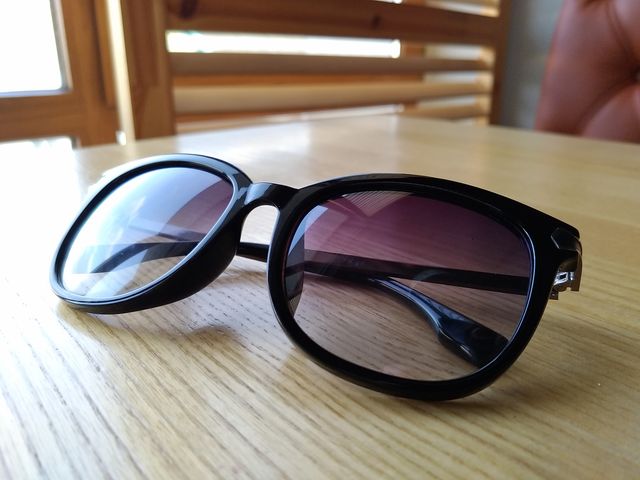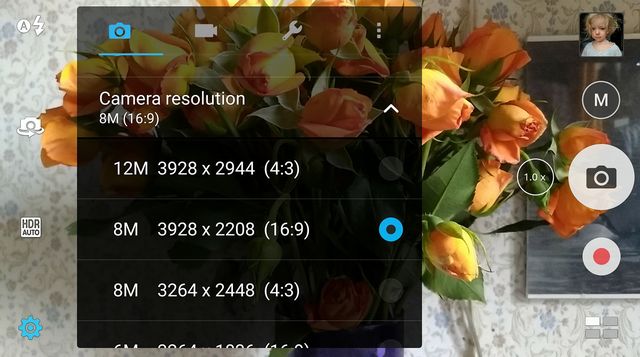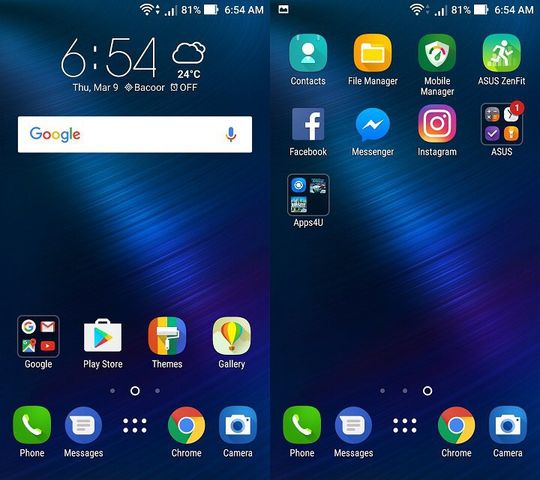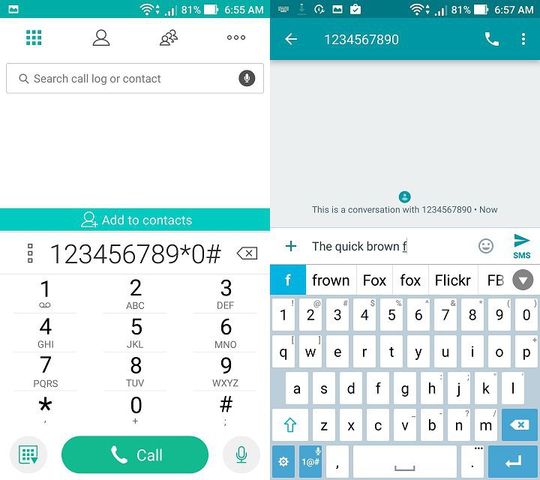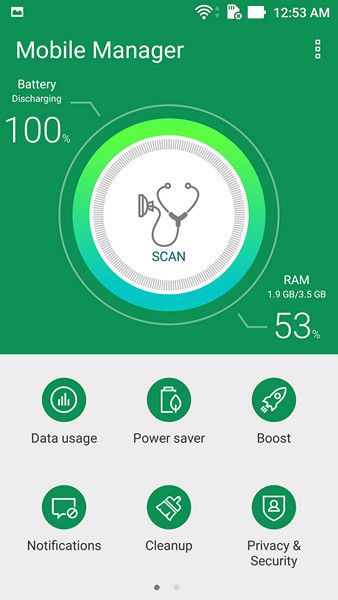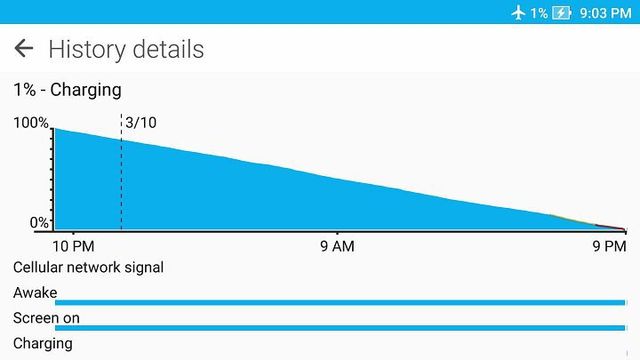Review Asus ZenFone 3 Zoom: real optical zoom and great battery life
ASUS ZenFone 3 Zoom ZE553KL is a copy of ZenFone 3 with several differences: there is more screen, the battery capacity has increased significantly, a second rear camera has been added, the stuffing has been clad in a completely metal case. Of course, this is not all.
ASUS ZenFone 3 Zoom: Packaging
In the box from under the smartphone ASUS ZenFone 3 Zoom there was a headphones of very decent quality. I’m serious! If you do not have time to get your favorite headphones, then you can score and use the complete “ears”.
From the interesting: in addition to the USB Type-C cable and the power supply (5V and 2A) in the box, there was also an OTG adapter from the full-sized port to USB C. The connector is quite fresh, not all have yet acquired adapters, and here the manufacturer gives you the necessary Pribludu Directly with the smartphone. This is not all the functionality of the adapter, I’ll tell you later why it’s needed.
ASUS ZenFone 3 Zoom: Design
Quite frankly, on the renderings, I liked the looks of the smartphone more. The live device looks different. Let’s start with what confused me personally.
The first and the main is the plastic border between the protective glass and the metallic body. For comparison, the iPhone from the 6th generation began to put exactly the same plastic padding. However, finding it difficult.
In the same Samsung Galaxy A7 (2017) in general there is no border – the glass rests immediately in the metal.
If the engineers removed it – the smartphone felt much better in the hand.
Second – I do not know why, but Asus does not hurry to complete its devices with touch-sensitive buttons. But this is convenient. Would.
The third point is that ASUS ZenFone 3 Zoom is very slippery. All corners are streamlined, the metal here is dull, and so the device can easily slip out of the hands to meet the asphalt. On the other hand, this is the problem of many modern devices.
In terms of ergonomics and size, ASUS ZenFone 3 Zoom ZE553KL is not the most successful model on the market. There are models of smartphones, where the 5.5-inch screen managed to fit into the body of a more compact size. And here is something average: not a huge shovel, like the same iPhone 6S Plus, but not a baby, if you compare it to OnePlus 3.
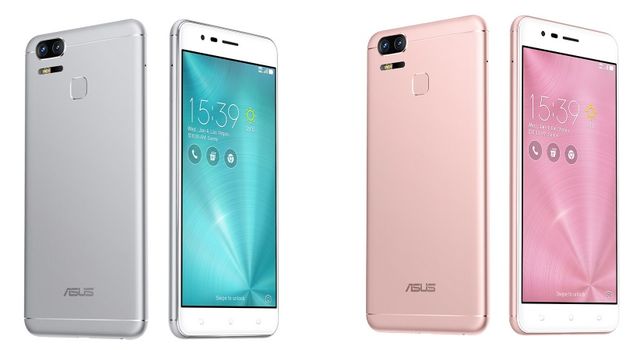
Otherwise, I did not find any shortcomings. The assembly is perfect, all the elements are perfectly matched to each other.
Perhaps for someone it will be important, but behind us we have two plastic inserts: top and bottom. They cover the antennas of the device and feel at once It becomes clear that this is plastic.
In addition, we have a fingerprint scanner behind us. Not a good place, but it’s a matter of habit. The sensor itself works perfectly – it will quickly and without problems unlock the device in 10 out of 10 cases.
ASUS ZenFone 3 Zoom is available in three color options: dark blue, silver and soft pink. Each coloring on the render looks like it’s different, so I do not recommend buying blindly.
ASUS ZenFone 3 Zoom: Display
The manufacturer decided to please us with AMOLED-matrix. This is good, because the color rendition of such panels is better than in IPS. And more “amold” is more economical to the charge of the battery.
Saturation, contrast of colors – everything here at the highest level. The inherent “green” screens at the corners are not there and that’s good.
With the permission to muddle did not become – it makes up the standard 1920 by 1080 pixels. The density of the points is 401 ppi.
Brightness 500 nits.
The NTSC palette is more than 100%.
Corning Gorilla Glass 5 with high-quality oleophobic coating.
It is stated that the frames on the sides of the display are 2.08 mm. This is not true. From the edge of the screen to the plastic edge we have here 2.8 mm (an error in the numbers?). And if you count the distance from the display to the edge of the case, then it’s generally 5 millimeters. In general, there is no question of any framelessness here.
It always lowers the backlight of the screen, and you can not adjust it to your needs. More truly, it is possible. I twisted the slider to the maximum with the auto brightness turned on, but I still did not have enough light.
Specifications ASUS ZenFone 3 Zoom ZE553KL
- Processor Qualcomm Snapdragon 625 with a frequency of 2 GHz (8 cores, 2 GHz, 14 nm)
- Graphics Adreno 506
- 4 GB of RAM
- 32, 64 or 128 GB of storage
- Support for Micro SD memory cards up to 2 TB (combo slot)
- 5,000 mAh battery
- OS Android 6.0.1 (update to 7.0 will be)
- ZenUI 3.0 Shell
- Sensors: accelerometer, light and distance sensor, gyroscope, fingerprint scanner, digital compass, RGB sensor and infrared sensor
- Connectors: USB Type-C (OTG works), audio output 3.5 mm
- Networks: 2G, 3G, 4G (LTE Cat. 7, frequencies: 1, 2, 3, 5, 7, 8, 20)
- Support for two Nano SIM cards
- Wi-Fi (802.11 b / g / n, only one 2.4 GHz band), Bluetooth 4.2, FM radio
- Navigation: GPS, Glonass, Beidou
Our smartphone has almost everything a modern user needs. To complete the picture and so, just in case, there are only three things missing: NFC, dual-frequency Wi-Fi and a fresh OS in the face of Android 7.0.
ASUS ZenFone 3 Zoom: Performance
Qualcomm Snapdragon 625 is one of the most successful processors in the last year. A million of manufacturers have adopted this particular chip, because:
- A) cheap for manufacturers
- B) offers sufficient for most Users productivity
In terms of performance, everything is fine here. The system flies, nothing lags and does not brake. Applications open quite quickly, not as flagship devices, but still fast.
Of course you can play on ASUS ZenFone 3 Zoom, but the cool graphics in 3D games should not be counted. For example, in “Tanks” on the maximum graphics settings, the FPS frequency jumps between 17 and 23 frames – not densely. However, we set the average parameters and everything becomes much more fun – the frequency does not fall below 35 FPS.
In synthetics, everything is quite expected.
The last test is 4K-video. Smartphone itself is able to record video with this resolution, and therefore, third-party content to it in the teeth. Everything is reproduced without a single delay.
ASUS ZenFone 3 Zoom: Camera Features
A key feature of the smartphone. No wonder because it is called ASUS ZenFone 3 Zoom. Let’s start, perhaps, with the front photosensor.
ASUS ZenFone 3 Zoom: Front-camera
A Sony IMX214 matrix was installed in front (dimensions 1 / 3.06 “, pixel size 1.12 microns). The resolution is 13 megapixels, the lens boasts a f / 2.0 aperture.
The flash itself is processed by the display, which for a split second twists the brightness by 200, and maybe even more percent.
Even at the presentation of the smartphone. The result of the expert tests of the camera camera below.
In the room where all the action took place, there was not the best coverage. Nevertheless, the smartphone tried very hard and, to my taste, coped perfectly well!
The first camera is a 12-megapixel Sony IMX362 sensor with an area of 1 / 2.55 “.
The second sensor – Samsung 3M3 with a smaller size – 1 / 3.42 ”. It is covered by a telephoto lens with a f / 2.6 diaphragm. Compared with the first camera, the second one can zoom in 2.3 times – such is the original interpretation of the “optical zoom” from Asus.
Already from the characteristics it is clear that the second sensor will be worse than the first one. However, it is intended for another – to bring the object closer to just one touch button, and not to approach it with legs. It is not always possible, but not always necessary. However, to have such an opportunity is useful.
To the left we have frames shot on a wide-angle lens, to the right – shot on camera with 2.3x zoom. In some places there will be 100 percent cropping to see everything in detail.
The manufacturer claims that the picture can be zoomed in and out of the digital zoom – 12-fold, and everything will be beautiful. No, it will not. Do not use this function and generally forget about digital zoom.
When I have a smartphone with two rear cameras on my hands, I like to do the following – to seal the lens of one of them and try all the declared chips. I did it with the Zygophon.
It’s funny that nothing has changed in an equal way. I sealed the right camera, began to poke on the buttons 1x and 2.3x, the picture quietly approached, then removed. How so ?! I thought that the manufacturer is deceiving users and the second sensor is stupidly stub.
I did it again and suddenly, when I switched to 2.3x, the viewfinder went out. Returned to 1x and the image appeared. It turned out that we are dealing with software algorithms that somehow smartly switch cameras, zoom images and stuff.
Of course, there is a new-fangled background blur. For this, only one camera (left) is needed, and only the software algorithms soap the background. Thanks to my patch, which helped me figure it out.
By the way, bokeh is quite suitable. Even in difficult situations, when you shoot polygonal objects. Not always, of course, but in most cases.
And here’s another example – more complicated. Pay attention to the gap between the parts of the metal barrage on the bottom photo. The smartphone clearly determined that this place belongs to the background and zamylil it! Frankly, I’m in shock.
The algorithms work even cooler than on the Huawei P10 . But he’s all such a bastard, with two cameras and a bunch of cool bells and whistles.
Of course, there are glitches. Below a couple of examples: on the left everything is normal, and on the right a jot shot – the device for some reason decided to zamylit my jacket. For what?!
Having studied all the examples, I realized that before us is one of the best middles in terms of photography. However, it is definitely not the top-end camera phone, because it does not reach the flagships in quality even in 2014. On the left is a photo taken with the ASUS camera, and on the right is a picture taken on the iPhone 6 Plus. 100 percent crooks follow.
But the focus in the smartphone is really cool. Devaysu absolutely do not care about lighting conditions, even at night it focuses very quickly and always accurately.
We say thank you to laser, phase and contrast focusing. The laser, by the way, is located directly under the lenses of the cameras, and next to it (the leftmost) is the RGB-sensor, responsible for the correct color transfer.
ASUS ZenFone 3 Zoom: Video shooting
The device pleases with high-quality shooting of 4K-video. And the resolution is high, and the frame rate does not fail, and even the bitrate is normal (42 Mbit / s).
A pleasant surprise is the support of optical stabilization during the shooting. And while recording Ultra HD videos.
Provided and shooting a slow-motion video, but in fact it is not so. The smartphone removes the usual FHD video, slows down the stream and cuts the frame rate to 15. Slow Motion can not be called that.
ASUS ZenFone 3 Zoom: Software
Someone likes the proprietary ZenUI 3.0 shell, some do not. However, here are a few facts about it.
It completely hides the interface of the original Android. From the appearance of the system in a state in which it conceived by Google, there was nothing left. By the way, the device works out of the box on the base of the 6th Android, but the developers promise to release the update in this half-year. We wait…
The shell is very bright, with a bunch of juicy colors that perfectly match with each other. On the AMOLED-screen it all looks especially juicy.
There is no “Asian” here, as it happens with other and more eminent producers. Everything is stylish, fairly minimalistic and functional.
Out of the box pre-installed one million utilities. These are photo editors, theme books, and system setup helpers, some optimize power consumption, others are responsible for performance monitoring, and so on. You can use all this good, fine-tune the device for your own needs, or you can just score.
For me, the main thing is that the software component is perfectly optimized, it does not load the device, but, on the contrary, helps it to work faster.
ASUS ZenFone 3 Zoom: Sound quality
The multimedia speaker here is one, located to the right of the USB C port. The quality is satisfactory, the volume is above average. On a noisy street, you can not miss a call from your pocket, maybe from a bag.
Sound in the headphones. I did not expect anything special in this regard, but the smartphone managed to surprise me. Unfortunately, in a negative way.
I do not know what might be the case, maybe in the raw firmware (the phone after all just came out), but for music lovers it does not fit. And this despite the fact that DTS Headphone: X 5.1 is supported and content playback at 192 kHz / 24 bit.
I genuinely do not like the trend when Google forces vendors to remove their own players and leave only Play Music. So things are not done.
ASUS ZenFone 3 Zoom: Battery life
The screen glow time will be about 5 hours, with exposed auto brightness and generally without any optimization. But there is an opportunity to configure the operation of networks and applications in the background, but I did not bother with it.
In my opinion, this is an excellent result! Especially against the background of most competitors who can boast only one day of autonomy.
Remember the complete USB C-adapter? So with it, ASUS ZenFone 3 Zoom can charge other devices.
Quick charging BoostMaster smartphone fully charged for 3 hours. Given this capacity, the result is quite normal.
ASUS ZenFone 3 Zoom: Conclusion
The smartphone was released at the beginning of this year and is already on sale. The current price of ASUS ZenFone 3 Zoom at the moment is $520. This is expensive, and no.
On the one hand, Samsung Galaxy A7 (2017) is breathing in the back, which is also very good: it supports Samsung Pay, it has protection from water, but it lacks the second camera and all the chips connected with it. It is worth, however, more expensive – $580.
You can throw a couple of thousands and buy one device, and if you add another 3 kilo, then the flagship of some, and there you already look and before the iPhone 7 Plus got. You know how it is.
On the other hand, we have Zenfone 3 ZE552KL for $455, but it has less battery, there is no dual camera and the usual IPS-screen. The difference is only four thousand, but ASUS ZenFone 3 Zoom still looks more interesting.
I think it’s better to look at the positive and negative points. So it will be more objective.
Advantages ASUS ZenFone 3 Zoom:
- Excellent packaging
- Perfect optimization
- Juicy and contrast AMOLED-matrix
- Protective glass Gorilla Glass 5
- Optical zoom 2.3x (real!)
- Excellent background blur (bokeh)
- Optical stabilization when recording 4K-video
- Two full days of autonomy
Disadvantages ASUS ZenFone 3 Zoom:
- Protruding plastic border around the screen
- Noticeable PenTile effect
- Performance games are not enough
- No backlight touch keys
- No NFC support
- Poor sound quality in headphones
Source: asus
